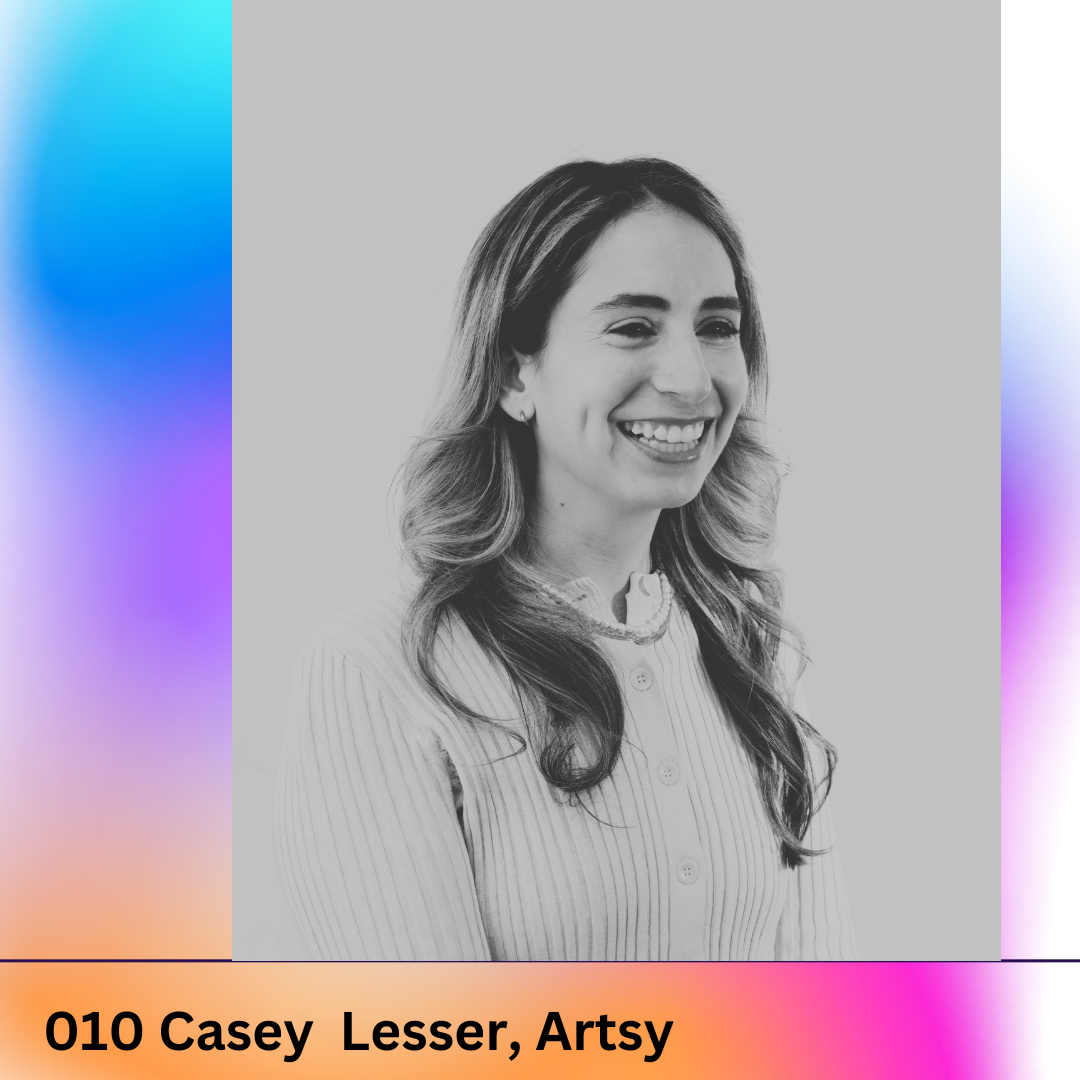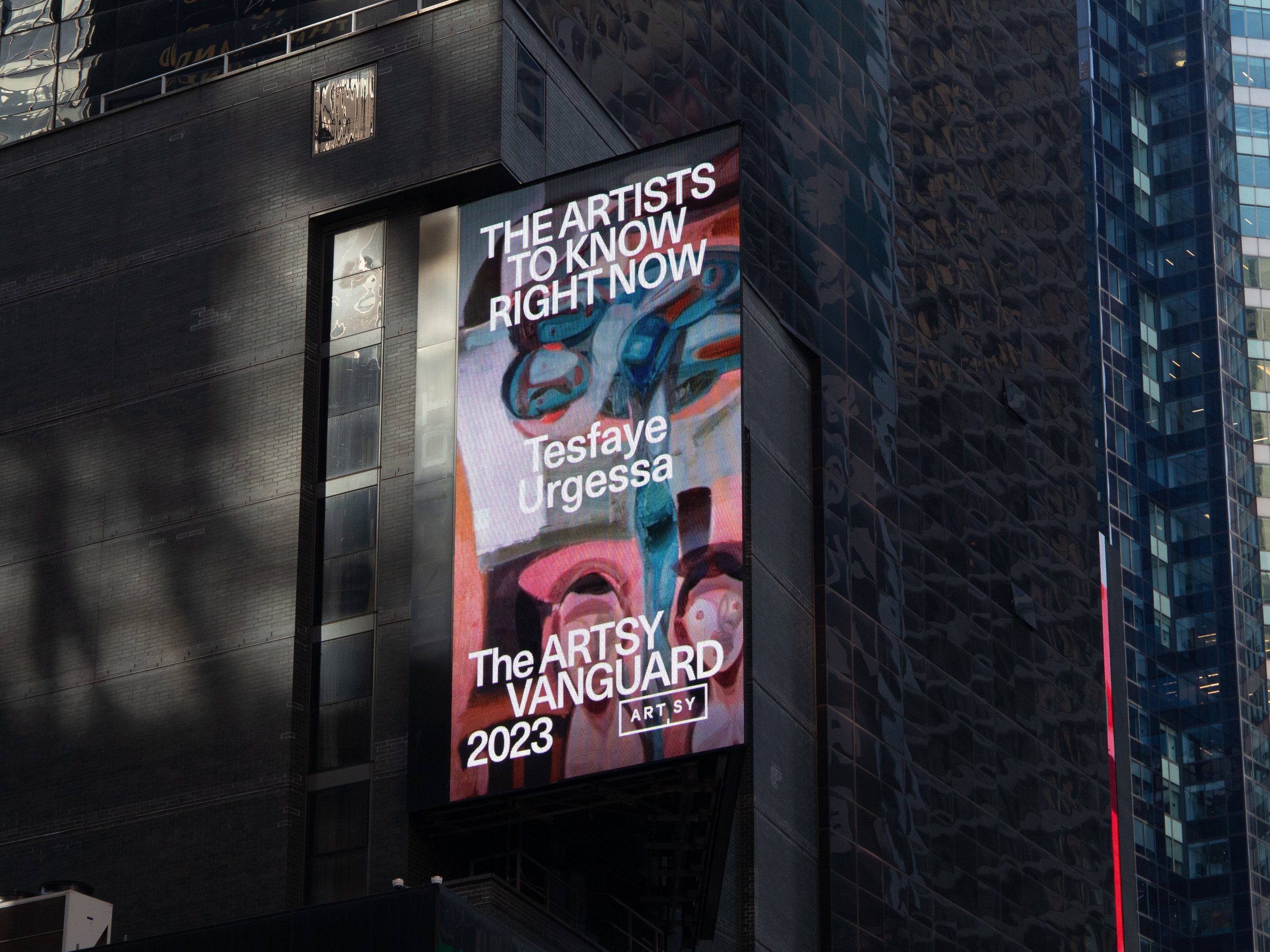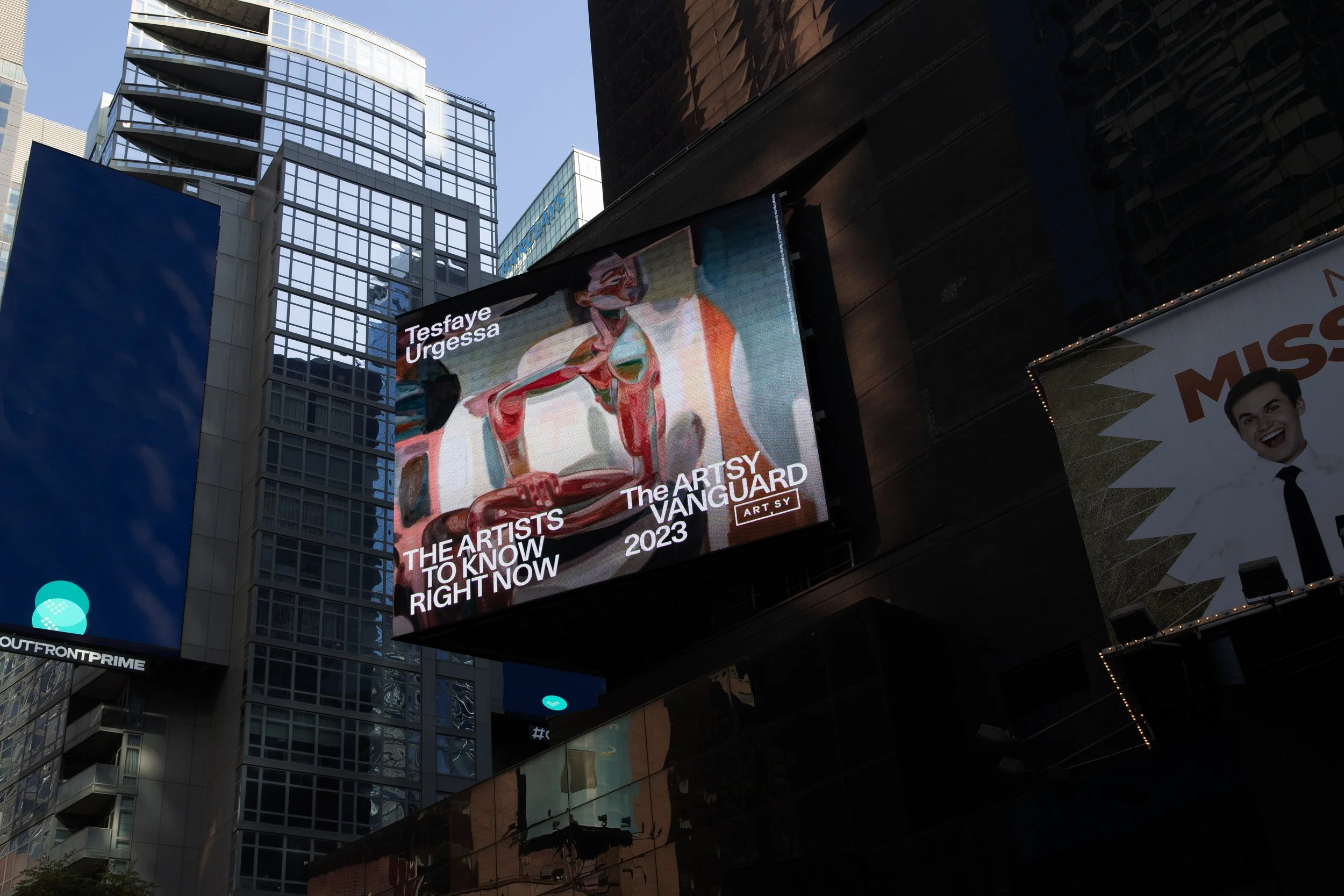Hot Coffee with Casey Lesser, Director of Content at Artsy
Artsy is a powerful part of the current art market.I was excited for this opportunity to talk to Casey Lesser, Director of Content there about market-oriented shifts in the arts. Casey spearheaded Artsy Vanguard and The Women Artists Market Report. She believes in making a difference by centering artists, their stories and visual styles and highlighting progressive shifts in the marketplace.
Nina: Imagine you are in your favorite coffee or tea spot. Where is it? What are you drinking? What are the three things you see right now?
Casey: My favorite coffee spot is Bittersweet in Fort Greene, Brooklyn, just a couple blocks from where I live. It’s a neighborhood favorite, so there’s often a line, but I never mind waiting for their coffee. I typically get a large drip coffee and with a splash of their homemade almond milk. It’s a to-go spot, so on an ideal day I take my coffee on a stroll through Fort Greene Park nearby. What I see is all based on the season and the time of day. Before 9 a.m., it’s a haven for dogs and their owners (and anyone who loves dogs). When it snows, it’s a wonderland of sleigh-riding and snowman-making. In the fall, the giant staircase in the middle of the park is filled with leaves. The spring, right around now, may be best—daffodils sprout up out of nowhere and cherry blossoms dot the trees and then their petals blanket large patches of ground in pink.
Casey’s friend’s dog Philly, at Ft.Green park.
Nina: As a curator and content creator of Artsy, what are the artistic, conceptual, aesthetic values you look for when taking on new artists as part of your Artsy Vanguard editions? How have the chosen artists from the previous editions fared - did they continue the predicted trajectory?
Casey: The Artsy Vanguard—our feature on the most promising artists working today—is one of my favorite parts of my job. It’s really a privilege to get to engross myself in the practices of hundreds of emerging artists and to work with my team to home in on a few really exceptional talents. And then to actually work with the artists and their galleries and share their stories with our audience is an honor. For the past couple of years we’ve arranged to feature the artists’ works on a Times Square billboard, which is such a cool and slightly unusual milestone for an artist. It’s in a spot where 3.3 million people pass by it each week.
When choosing the artists, it’s a matter of narrowing down 2,000 or so options to 10, which is daunting. And while I’m constantly looking at artists’ CVs and Instagram accounts to get a sense of their trajectory and career to date, the work itself always comes first.
I tend to go to artists’ websites and their Instagrams, looking for something fresh that speaks to this moment; I love a balance of something visually stunning or spare and elegant, with a really solid story to tell. I look for the narrative—whether it’s biographical or political or about process and the history of artmaking. There has to be really solid technique and execution, but something that moves me, whether it’s that story or palpable emotion. It’s a tall order but plenty of artists are doing this well. And this is pretty much at the core of all of the curatorial and editorial work that my team and I do at Artsy.
I love when the work is so clearly representative of this current moment, within the art world and beyond it. Last year we had several amazing artists working in abstraction—like Harminder Judge, Sarah Cunningham, and Li Hei Dei—who are building upon this decades-old genre and making it their own. Judge creates massive, transportive portals that you can’t help but get lost in ; Hei Di surfaces notions of human connection and sensuality through slick, fluid surfaces and colors; and Cunningham responds to the natural world, representing for example, that ethereal experience of looking up under a canopy of forest.
We’ve seen past Vanguard artists go on to really exciting new career heights. We see them go on to gain representation with top galleries, show in biennials, set eye-opening auction records. One of my all-time favorites is Alexis Ralaivao, who we featured in 2022 and is now represented by Kasmin; his works seem to be appearing at nearly every important art fair. This most recent edition, we featured Tesfaye Urgessa, who is now representing Ethiopia at the Venice Biennale.
It’s also pretty cool to dig into data and put numbers to that momentum. For the 2022 artists, we found that on average, in the year since being featured, their Artsy followers increased by 100% (compared to 15% growth for the 1,000 most-followed ultra-contemporary artists on Artsy); the number of collectors inquiring on their artworks on Artsy rose by 67%; and the total sum of prices for their works sold at auction grew by 375% (compared to 34% growth for all ultra-contemporary artists works at auction during the same time period).
Image courtesy of Artsy.
Nina: Please tell me more about the second, current, edition of The Women Artists Market Report you have worked on. What are the new trends there you have not observed before? Are there any new names that have not been included in the previous edition and now are garnering more attention?
Casey: We took a new approach for The Women Artists Market Report this year, focusing on Artsy data rather than auction data, so there were a lot of new names to discuss. The numbers are still pretty bleak overall (women artists’ works accounted for just 25% of inquiries on for-sale artworks on Artsy in 2023), but we found a promising trend towards parity among younger artists.
Among Gen Z artists, women accounted for 51% of inquiries. And within that cohort, there were some compelling patterns, like a strong representation of rising African artists, like Cinthia Sifa Mulanga, Zandile Tshabalala, Muofhe Manavhela, and Araba Opoku.
On the other side of the age spectrum, the report also covered late women artists who are gaining overdue acclaim. This includes Pacita Abad, who is now being featured in the Venice Biennale and a traveling survey exhibition that recently opened at MoMA PS1. Plus, there were quite a few masters of abstraction, like Alice Baber, Emily Mason, Wook-kyung Choi, and Loló Soldevilla, among others. This year we were really trying to spotlight women artists who have exciting momentum, rather than dwell on familiar conversations around the ongoing lack of parity in the market.
Image courtesy of Artsy.
Nina: What do you think of the strong, even probably, unprecedented dependency of artists on the market mechanism today? It seems that more and more artists are working purely by what gallerists and collectors are searching for and buying thus creating a vicious circle of fewer ideas and increased amount of artworks. Do you see a way out of this?
Casey: I don’t think we necessarily need a way out of this. Artsy’s mission is to expand the art market to support more artists, and I think if we’re seeing more and more artists speak to what galleries and collectors want, it might just mean that more artists are being more practical. I think it’s possible for artists to both meet the market and create fresh, original work.
During one of the first interviews I ever did after joining Artsy (in 2013!), an artist gestured to a large section of his studio filled with work and very openly explained to me that he makes that work to pay the bills, even though it’s boring for him to make again and again and again. The rest of the work though, he did for himself. Around a decade later, I had a similar conversation with a totally different artist. She’s become well known for a particular type of work that collectors love, and she keeps making these works to meet the demand. She’s grateful to have that steady income and it’s allowed her to grow and try new things—which was totally evident in her latest body work, which brings in completely new ideas and materials.
I can’t pretend to know how challenging it is for artists to maintain not one but two distinct practices in this way, but I see it’s the most promising way forward I’ve seen, and it’s definitely not new, maybe just more widespread. Given the extremely scarce funding for artists in the U.S., it’s hard enough to be a full-time artist; avoiding the market, and what galleries and collectors want is not, in my opinion, a viable option.
Image courtesy of Artsy.
Nina: What is a project you are looking forward to in 2024 or a project you feel very proud about?
Casey:I’m really proud of Foundations, Artsy’s own online art fair, the third edition of which will launch in mid-July. The idea for Foundations came out of conversations we were having around how we can better speak to, represent, and support small galleries—from established programs located outside of major art hubs to young and emerging galleries. The art world tends to fixate on a handful of well known galleries and we wanted to try to broaden horizons (ours included) and surface these less known galleries and their amazing artists.
We’ve had two editions now and we’ve developed editorial content, curated collections, and Instagram Reels to help bring these galleries’ stories and their programs to life—and in turn we’ve seen the galleries really get into it, creating their own content and promotions on their own channels. It really feels like with each edition we’re strengthening this community and commitment we have with galleries. And each time we end up with a really exciting selection of works by cool, fresh artists, and often the works are being sold at (relatively) affordable price points (e.g. under $1,000).
Like many art fairs, we recommend artists we’d like to see in the fair and galleries often take our suggestions plus add new names. For the latest edition, this past winter, we also launched a prize to recognize one standout artist and four honorable mentions. The winner was Savannah Marie Harris, a fantastic painter based in London who shows with the tastemaking gallery Harlesden High Street. We used the Times Square billboard again and showed one of Harris’s works there for two weeks.
It’s also a great project because the whole Artsy team gets really into it—we share our favorite artworks and new artists we’ve discovered and we discuss feedback from the galleries and how we can improve in the future. I think the communal, supportive spirit of the project makes it especially appealing—and it’s just a really refreshing alternative to typical art fairs.
Image courtesy of Artsy.





